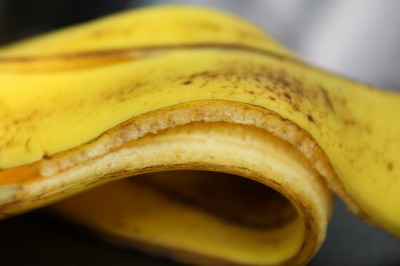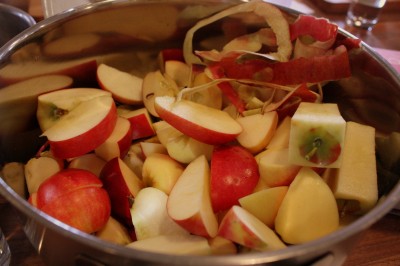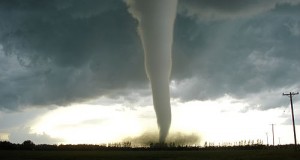Whether it is due to drought, pollution, lack of conservation efforts or simply a burgeoning population, the scarcity of clean drinking water is a looming problem for our country and for our world.
According to The Water Project website, one in nine people in the world currently does not have access to safe drinking water. In addition, as much as 80 percent of illnesses in developing countries are linked to unsanitary water conditions. Some experts estimate that by 2050 there will simply not be enough fresh water to sustain the world’s expected 9.1 billion population.
These numbers do not even consider the shortages of clean water that can result from natural disasters or other calamities that would limit an otherwise functioning water supply system. Nor do they take into account that deteriorating city infrastructures are delivering contaminated water to many people throughout the world, including the United States.
Although all these statistics are startling and worrisome, there is some good news. During a survival situation, there are some natural ways to reduce the contaminants in your drinking water. And the best part is that they are low-tech or no-tech solutions. In fact, they come from nature itself and involve fruit peels.
National University of Singapore Researcher Ramakrishna Mallampati was not the first person to use fruit peels to purify water, but his studies have given scientific backing to what many cultures have passed down from generation to generation.
Findings from a two-year study were published in the American Chemical Society’s journal ACS Applied Materials & Interfaces in 2013. Since then, other studies have replicated his research.
How can you put this knowledge to use in your own drinking water supply? Here are four fruits that can be used to purify water. Please note that these processes usually do not remove disease-causing organisms, or pathogens, such as viruses or bacteria — from the water, and it is recommended that you use a water filter, such as a portable Paratrooper Water Purifier, to completely clean the water so that it is safe.
Paratrooper: Fits In Your Pocket And Removes 100 Percent Of Water-Borne Bacteria!
Such a filter even would allow you go drink lake and river water.
Apple and Tomato Peels
Mallampati’s study found that peels from apples and tomatoes work like sponges in contaminated water, absorbing and thereby reducing levels of metals, pesticides and dyes.
The peels of eight tomatoes were able to remove several different contaminants found in one liter of water within one hour. These contaminants included heavy metal ions (such as lead), dissolved organic and inorganic chemicals, pesticides and dyes.
Since apples and tomatoes are two of the most widely consumed fruits in the world, this study finding has the potential for inexpensively helping hundreds of millions of people.
To try Mallampati’s water purification in your own home yourself, follow these simple steps:
- Peel your apples and/or tomatoes and place them in a rubbing alcohol solution
- Let the peels soak well in the solution
- Remove the peels from the solution and let them dry out.
- Place the peels in a container of water
- After two hours, remove the peels from the water
- The water is ready to drink.
Banana Peels
Banana peels also can help purify water. In a separate 2011 study conducted at the Bioscience Institute in Botucatu, Brazil, researchers found that banana peels removed lead and copper from river water.
How does it work? Banana peels contain nitrogen, sulfur and carboxylic acids. These acids can bind with polluting metals in the water.
In an article published on Scidev.net, Dimitris Kalderis, a wastewater treatment expert at the Technical University of Crete, wrote: “The results are very promising, and the banana peel process has proven to be a cost-effective and quick alternative to conventional methods … I think that a small automated system to use either at home or at a central point for multiple families could be developed. The knowledge is there, what we need right now is innovation and construction.”
Sunlight and Lime Juice
Often called solar disinfection, this method is quick and effective. The solar disinfection method involves placing a clear glass container filled with contaminated water in direct sunlight for a minimum of six hours.
A study conducted by the Johns Hopkins School of Public Health and the Johns Hopkins School of Medicine found that when lime juice was added to the water during this solar disinfection process, harmful bacteria – including E. coli – was removed significantly more quickly than with solar disinfection alone. In fact, the process took only about 30 minutes.
This Super-Fast Purifier Filters A Liter Of Water In 3 Minutes!
This amount of time is similar to the treatment time involved with boiling water. However, this method was not as effective as other methods in removing viruses from the water. In addition, researchers noted that the purified water had a pleasant taste.
Seaweed
If fruits are not readily available, another exciting trend in water purification involves seaweed. Seaweed needs nutrients like nitrogen and phosphorous in order to survive, so it absorbs them. Some scientists, including University of Connecticut biologist Charles Yarish, have theorized that seaweed could help clean polluted coastal waters and rivers.
With almost 800 million people worldwide lacking access to clean water, the studies of these easy inexpensive means of purifying water are promising. Since many fruit peels just go to waste, researchers are investigating other fruit peels – especially fruits that are local to certain areas of the world — and other natural fibers for their ability to clean water.
Again, these methods won’t remove all dangerous pollutants, and it is recommended that you use something like a Paratrooper water filter to make the water fully safe. But in a survival situation, they are worth trying.
What advice would you add on purifying water? Share your thoughts in the section below:
Clean Water Is Becoming More Rare Than Oil. Read What To Do Here.
 Off The Grid News Better Ideas For Off The Grid Living
Off The Grid News Better Ideas For Off The Grid Living






